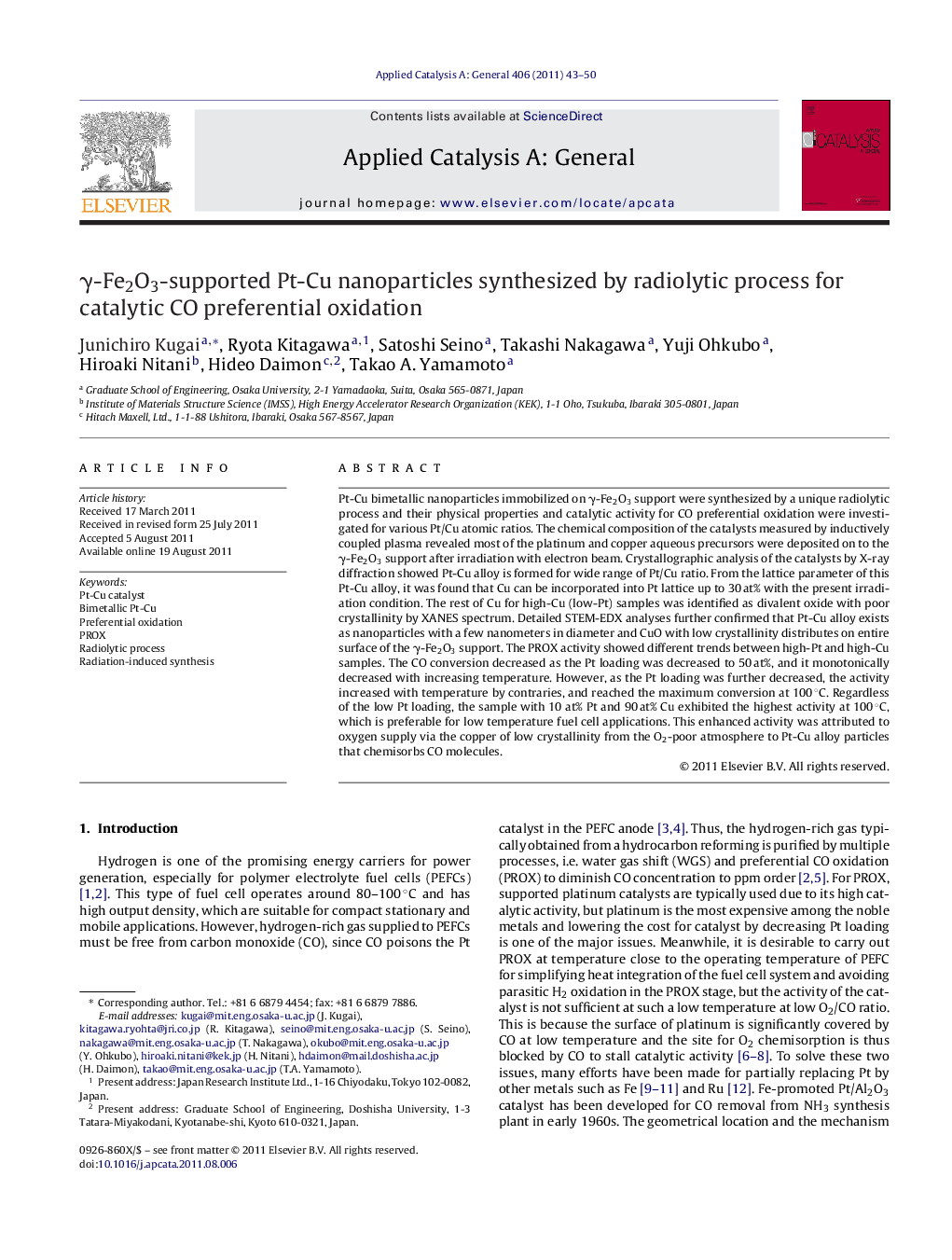| Article ID | Journal | Published Year | Pages | File Type |
|---|---|---|---|---|
| 41220 | Applied Catalysis A: General | 2011 | 8 Pages |
Pt-Cu bimetallic nanoparticles immobilized on γ-Fe2O3 support were synthesized by a unique radiolytic process and their physical properties and catalytic activity for CO preferential oxidation were investigated for various Pt/Cu atomic ratios. The chemical composition of the catalysts measured by inductively coupled plasma revealed most of the platinum and copper aqueous precursors were deposited on to the γ-Fe2O3 support after irradiation with electron beam. Crystallographic analysis of the catalysts by X-ray diffraction showed Pt-Cu alloy is formed for wide range of Pt/Cu ratio. From the lattice parameter of this Pt-Cu alloy, it was found that Cu can be incorporated into Pt lattice up to 30 at% with the present irradiation condition. The rest of Cu for high-Cu (low-Pt) samples was identified as divalent oxide with poor crystallinity by XANES spectrum. Detailed STEM-EDX analyses further confirmed that Pt-Cu alloy exists as nanoparticles with a few nanometers in diameter and CuO with low crystallinity distributes on entire surface of the γ-Fe2O3 support. The PROX activity showed different trends between high-Pt and high-Cu samples. The CO conversion decreased as the Pt loading was decreased to 50 at%, and it monotonically decreased with increasing temperature. However, as the Pt loading was further decreased, the activity increased with temperature by contraries, and reached the maximum conversion at 100 °C. Regardless of the low Pt loading, the sample with 10 at% Pt and 90 at% Cu exhibited the highest activity at 100 °C, which is preferable for low temperature fuel cell applications. This enhanced activity was attributed to oxygen supply via the copper of low crystallinity from the O2-poor atmosphere to Pt-Cu alloy particles that chemisorbs CO molecules.
Graphical abstractFigure optionsDownload full-size imageDownload high-quality image (151 K)Download as PowerPoint slideHighlights► Pt-Cu nanoparticles were successfully synthesized on γ-Fe2O3 by radiolytic process. ► Up to 30–50% of Cu can be incorporated in Pt lattice to form Pt-Cu alloy. ► Amorphous CuO layer was also identified on γ-Fe2O3 surface. ► The catalysts that consist of Pt-Cu alloy and amorphous CuO show high PROX activity. ► The high activity was attributed to high O2 transport and lowered H2 chemisorption.
